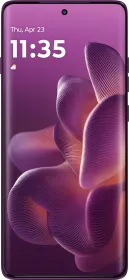With smartphone photography evolving rapidly, mid-range devices are now pushing the boundaries of what’s possible. Among the top contenders in the ₹35,000 to ₹45,000 segment, the vivo V50, OPPO Reno13, and Samsung Galaxy A56 stand out for their high-megapixel sensors, AI-driven enhancements, and versatile camera setups. The vivo V50 even boasts ZEISS imaging, promising flagship-grade photography.
But do these devices live up to their claims in real-world usage? To answer that, we’re putting their cameras to the test—covering portraits, macros, selfies, night photography, and more. Whether you’re a mobile photography enthusiast or just looking for the best camera phone under Rs 45,000, this in-depth comparison will help you decide. Let’s dive in!
vivo V50 vs. OPPO Reno13 vs. Samsung Galaxy A56 Camera Specs

Before we dive into the full comparison, let’s take a closer look at the camera specifications of each device:
vivo V50
- Main Camera: 50 MP ZEISS main camera with OIS, 1/1.55-inch, f/1.9, PDAF, 23mm, 4K30
- Ultra-wide Camera: 50 MP ZEISS sensor, 1/2.76-inch, f/2.0, AF, 15mm, 4K30
- Group Selfie Camera: 50 MP ZEISS sensor, 1/2.76-inch, f/2.0, AF, 21mm, 4K30
OPPO Reno13
- Main Camera: 50 MP sensor with OIS, 1/1.95-inch, f/1.8, PDAF, 26mm, 4K30
- Ultra-wide Camera: 8 MP sensor, 1/4-inch, f/2.2, AF, 15mm, 1080p30
- Selfie Camera: 50 MP sensor, 1/2.75-inch, f/2.0, AF, 21mm, 4K30
Samsung Galaxy A56
- Main Camera: 50 MP sensor with OIS, 1/1.56-inch, f/1.8, PDAF, 26mm, 4K30
- Ultra-wide Camera: 12 MP sensor, 1/3.06-inch, f/2.2, FF, 13mm, 4K30
- Macro Camera: 5 MP sensor, f/2.4, FF
- Selfie Camera: 12 MP sensor, 1/2.8-inch, f/2.2, FF, 21mm, 4K30
On paper, the vivo V50 leads with superior hardware and ZEISS imaging—larger sensors, AF, and consistent 4K30 across all lenses. The OPPO Reno13 follows with a strong (but smaller) main and selfie setup but a weaker ultra-wide. The Galaxy A56 trails with modest ultra-wide and selfie with no AF, plus a basic macro with FF.
vivo V50’s ZEISS Magic
The vivo V50 sets itself apart from the other two phones with its exclusive, flagship-inspired features, found on the vivo X200 series. Its ZEISS Multifocal Portrait System offers three focal lengths—23mm, 35mm, and 50mm.




You also get seven unique ZEISS Bokeh Styles (Sonnar, Planar, Flare, Cinematic, B-Speed, Distagon, and Biotar) to choose from, delivering professional-grade portraits with customizable, DSLR-like depth and artistic background blur.
The India-exclusive Wedding Portrait Mode enhances wedding photography with preset color styles like Prosecco, Neo Retro, and Pastel, smart lighting adjustments, and a Color-Adaptive Border that complements traditional attire.
Now, let’s dive into the comparison.
vivo V50 vs. OPPO Reno13 vs. Samsung Galaxy A56 Camera Comparison: Main Camera
The vivo V50’s 50 MP ZEISS main camera excels in both 1X and 2X shots, delivering outstanding color consistency, vibrant yet pleasing tones, and crisp details with minimal oversharpening, even in the hazy urban landscape. Its ZEISS optics and larger sensor size ensure superior dynamic range, preserving highlights and shadows effectively.


The OPPO Reno13’s 50 MP main camera offers good color accuracy but shows slightly muted tones and less sharpness in 2X shots, with some loss of detail in shadows.
The Samsung Galaxy A56’s 50 MP main camera performs well with balanced colors but struggles with oversharpening in high-contrast areas and lacks the vivo’s richness in color depth.


Overall, the vivo V50 stands out for its superior image quality, making it the top choice for main camera photography.
Ultra-wide Camera
The vivo V50’s 50 MP ZEISS ultra-wide camera delivers exceptional detail and vibrant colors, with minimal oversharpening and well-preserved highlights, making it ideal for capturing expansive scenes with clarity. The OPPO Reno13’s 8 MP ultra-wide shows decent performance but struggles with lower resolution and softer details.
The Samsung Galaxy A56’s 12 MP ultra-wide offers solid color accuracy but lacks the sharpness and dynamic range of the vivo, with some noticeable oversharpening in high-contrast areas. Overall, the vivo V50 stands out, making it the top choice for ultra-wide photography among the three. It’s also the only ultra-wide camera with auto-focus.
Portrait Mode
The vivo V50 redefines portrait photography with its ZEISS multifocal system, dominating at 23mm, 35mm, and 50mm focal lengths with sharp edge detection and seamless detail retention. The images below showcase ZEISS signatures—a solid evidence of its portrait mastery.



It’s seven ZEISS Bokeh Styles (Sonnar, Planar, Flare, Cinematic, B-Speed, Distagon, and Biotar) deliver stunning depth with creamy, customizable background blur, enhancing the artistic appeal—ideal for wedding photography and styles—while maintaining rich, consistent skin tones and vibrant colors.
The OPPO Reno13’s portrait mode provides solid edge detection but struggles with slightly harsher bokeh transitions and less depth, with skin tones appearing slightly muted and oversharpening applied on the facial details.
The Samsung Galaxy A56’s portrait, while capable, shows less precise edge detection, especially at 2X digital crop, and its bokeh lacks the smoothness and variety of the vivo, with flatter tones.
In these images, the vivo V50 captures the subject’s contemplative pose on the floral couch with remarkable clarity, vibrant colors, and a professional bokeh effect, making it the standout choice for portrait photography. You can also check out the various bokeh effects available below.
Macro Photography
The vivo V50 features a 50 MP ZEISS ultra-wide camera (1/2.76-inch, f/2.0, 15mm) that doubles as a macro camera, cropping to 26mm for close-up shots, offering exceptional resolution and autofocus for sharp, detailed imaging.
The OPPO Reno13’s 8 MP ultra-wide (1/4-inch, f/2.2, 15mm) doubles as a macro but is limited by resolution, sensor size, and aperture. The Galaxy A56’s 5 MP macro (f/2.4, fixed focus) lacks autofocus and struggles with detail.
The vivo V50’s macro shots, as you can see in LEGO model and the pink rose, showcase remarkable detail and depth, capturing intricate textures—like the LEGO’s small components and the rose’s petal layers—with vibrant colors and minimal noise, even at close range.
Its larger 50 MP sensor ensures a closer look and superior sharpness, outshining the other two phones. The OPPO Reno13’s 8 MP macro images show reasonable detail but lack the vivo’s depth and clarity, with softer edges and less vibrant colors. The rose petals lack any detail at all as the Reno13 simply could not get that close.
The Samsung Galaxy A56’s 5 MP macro shots, while capturing the subjects, suffer from fixed focus limitations (check the LEGO shot), resulting in blurred edges and less detail. So, despite the A56 having a dedicated camera for macro, the vivo V50 leaps ahead, thanks to the ultra-wide camera doubling as a macro shooter too. The vivo V50 takes a clear win for macro photography.
Selfies
The vivo V50’s 50 MP ZEISS Group Selfie camera (1/2.76-inch, f/2.0, 21mm, AF) delivers exceptional selfie performance, capturing sharp details in the subject’s facial features, beard, and sweater texture, with vibrant, natural skin tones and minimal noise, even under bright outdoor lighting.
Its autofocus and larger sensor size ensure excellent depth and clarity, making it ideal for group selfies or individual shots, as seen in the image with the subject and vehicle. Also, you can zoom in up to 2X by pinching in to get super close with the selfies when you want to.
The OPPO Reno13’s 50 MP selfie camera (1/2.75-inch, f/2.0, 21mm, AF) is no slouch either. It offers good detail and color accuracy but shows slightly softer edges and less vibrant tones, with some noticeable oversharpening but not too much.
The Samsung Galaxy A56’s 12 MP selfie camera (1/2.8-inch, f/2.2, 21mm, FF) performs adequately but lacks the vivo’s detail and depth due to its fixed focus and smaller sensor, resulting in flatter skin tones and less crispness, particularly in the subject’s facial hair and clothing texture.
The vivo V50 also features AI 3D Studio Lighting 2.0 which helps remove backlight haze and add adaptive lighting to make your selfies standout. Overall, the vivo V50 stands out for its superior clarity and color consistency, making it the top choice for selfies.
Conclusion
After a thorough comparison of the vivo V50, OPPO Reno13, and Samsung Galaxy A56 cameras across various scenarios—main, ultra-wide, portrait, macro, and selfies—the vivo V50 emerges as the clear winner in this mid-range price bracket (₹35,000–₹45,000).
Its superior hardware, including a larger 50 MP ZEISS all main camera system with autofocus and OIS delivers exceptional detail, vibrant colors, and consistent image quality, particularly excelling in the ZEISS multifocal portrait mode with its seven ZEISS Bokeh Styles and Wedding Style Portraits.
It also takes great macros with its ultra-wide doubling as a macro. The OPPO Reno13 performs well but falls short with its lower-resolution ultra-wide and less dynamic portraits, while the Samsung Galaxy A56 lags due to fixed-focus limitations and smaller sensors, especially in selfies and macros. For the best all-around photography, the vivo V50 stands out as the top choice.
Pricing
When it comes to pricing, the vivo V50 starts at ₹34,999 for the 8/128 GB variant, going up to ₹40,999 for 12/512 GB. The OPPO Reno13 sits slightly higher, starting at ₹37,999 for 8/128 GB, while the Samsung Galaxy A56 is the priciest, beginning at ₹41,999 and going up to ₹47,999 for the 12/256 GB model. This makes the vivo V50 the most budget-friendly option while still delivering the best camera performance.
You can follow Smartprix on Twitter, Facebook and Google News. Visit smartprix.com for the latest tech and auto news, reviews, and guides.











































Can anyone share their experience with the macro lens? Does it capture fine details effectively?
Yes, quite good
The macro lens is great! You can get really close and see a lot of detail